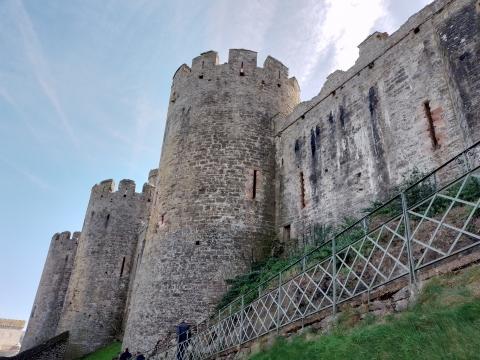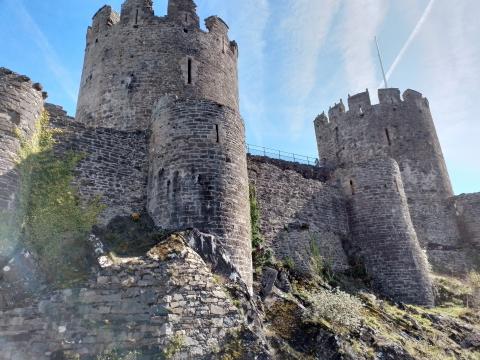Conwy Castle

I like to visit at least one castle on my spring vacation to Wales. On Monday, I caught the train to Conwy, wishing to inspect the great castle there. I was there thirteen years ago, but the greatness of the fortress can easily sustain a second inspection. Those huge towers, and those down the road at Conwy’s great sister, Caernarfon, echo the mighty walls of Constantinople, which Edward Plantagenet will have witnessed while on crusade. Built on a rocky peninsular overlooking the River Conwy and with a fortified town to its back, the mighty stronghold seems impregnable. I felt overpowered by those great stone bastions just looking up at them. Yet the castle did fall.

It didn't take war machines, battering rams or a long drawn out siege to capture Conwy Castle; just guile and planning. On April 1st 1401, whilst the castle's garrison attended the Good Friday service at St. Mary's Church, supporters of Owain Glyndŵr, disguised as carpenters, talked their way in to the castle and killed the two guards left on watch. This coup was a mighty boost for Glyndwr's war against English rule, causing a wave of rebellion across Wales. For fifteen weeks the castle held out until a surrender was negotiated.

That which could withstand a powerful physical assault fell to tricksters. King Adam the First, mighty Prince and God’s Viceroy on earth, perfect in features, intelligence and spirit, was beguiled by his wife who was herself deceived by a lying snake. The walls of his heart were sturdier and stronger than those built by Edward at Conwy, but they were conquered just as easily. May we always be on our guard against false doctrine, hypocritical liars and Satan’s whispers; such are more effective weapons than battering rams and trebuchets.
- Log in to post comments


 Sunday Worship 10.45am & 6.00pm
Sunday Worship 10.45am & 6.00pm